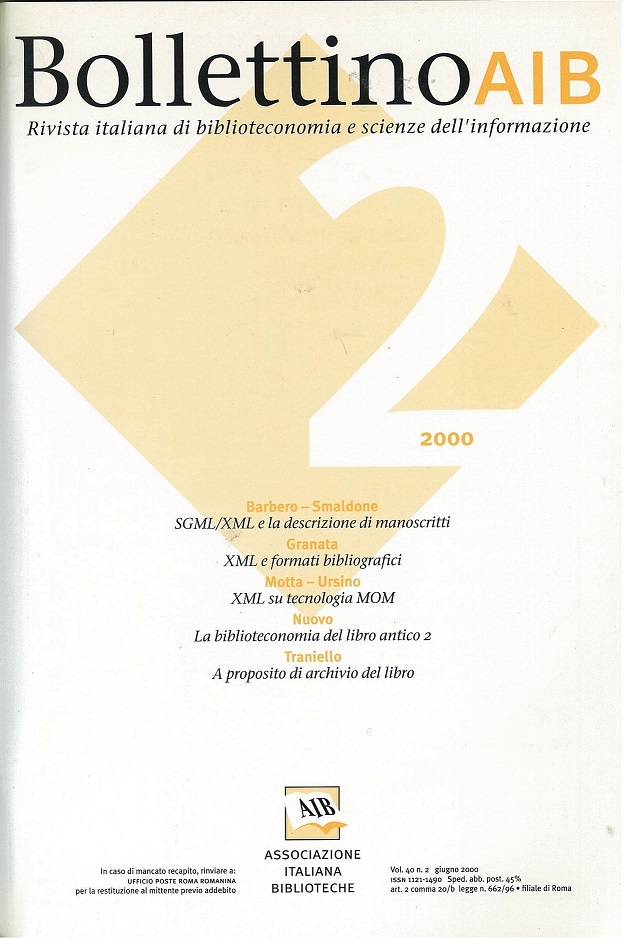SGML/XML and the description of manuscripts
Main Article Content
Abstract
The MASTER (Manuscript Access through Standards for Electronic Records) Project, funded by the European Union, is developing a Document Type Definition for medieval manuscripts in SGML (Standard Generalized Mark-up Language) and is preparing software tools compatible with this standard, to write and search SGML files containing descriptions of manuscripts. Leader of the project is the Centre for Technology and the Arts of the De Montfort University (Leicester) and the other participants are the Koninklijke Bibliotheek of the Hague, the Arnamagnaen Institute of Copenhagen, the French Institut de recherche et d'histoire des texte, the National Library of the Czech Republic (Prague), the University of Oxford, the Bildarchiv Foto Marburg and IBM UK. The project is in liaison with the Text Encoding Initiative (TEI) carried out in the United States.
After an overall glance to the DTD developed by this project, which may include both detailed data fields and text paragraphs, the article checks its compatibility with some manuscript descriptions published in recent Italian catalogues.
It then goes on to evaluate the resources required by a library that decides to catalogue its codices following the lines developed by this project. The software market provides a number of tools, compatible with the SGML/XML standard, which, due to their simplicity, could be used in a library for the creation, editing and searching of documents of the kind described.
Finally its experimental applications, developed in the University of Milan, are described. These make it possible to import SGML/XML manuscript descriptions into the MANUS software (a manuscript cataloguing package distributed by the Istituto centrale per il catalogo unico) and export MANUS descriptions to SGML/XML files.
The analysis shows that this format responds to many of the typical requirements of manuscript description. In fact it allows the creation of collections of information subject to corrections, developments and new links, for example using even partial work such as the recovery of ancient catalogues or the exhibition displays, so that no result, once achieved, may ever be lost. Moreover, the software tools used up to now in Italy in collecting data regarding manuscripts do not respond to all the requirements of cataloguers and scholars. This is often the case, for example, because it is difficult to force so many and such different details into the typical schemes of a database. The SGML/XML format, on the other hand, not only guarantees the interchange of the data but responds both to the requirements of structured information and of text descriptions containing non structured information, without imposing complicated and costly duplications of data input.
Article Details

This work is licensed under a Creative Commons Attribution-ShareAlike 4.0 International License.
